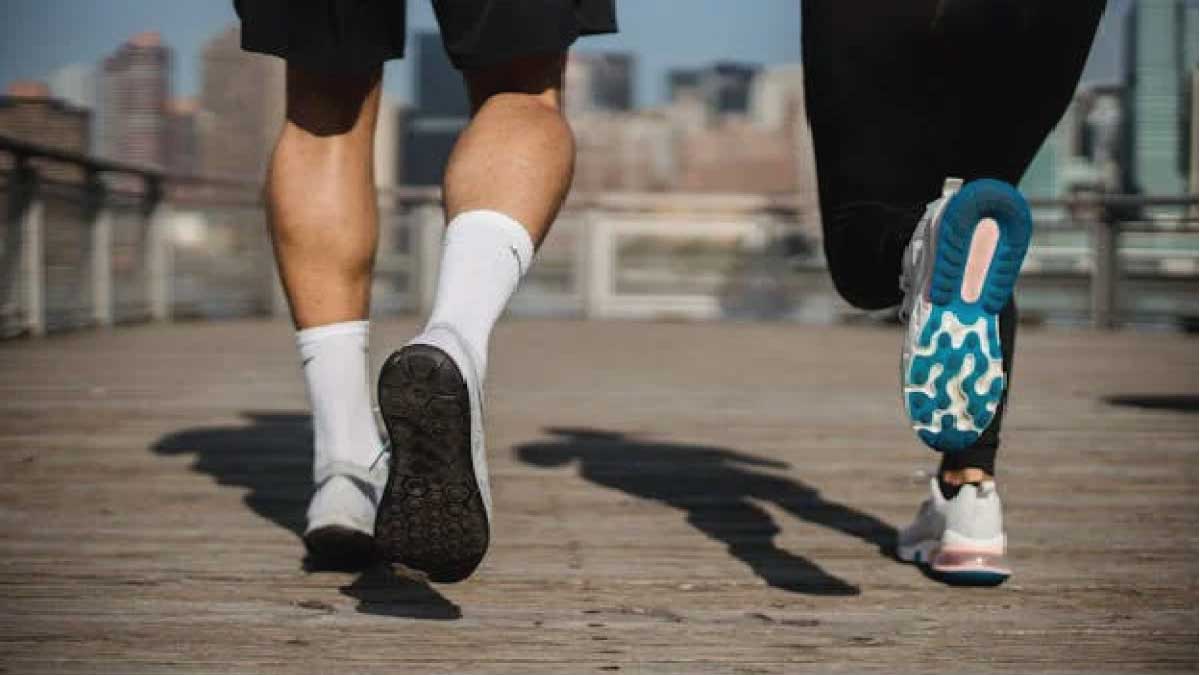Running with or without shoes offers distinct benefits. Shoes provide cushioning and protection, reducing injury risk on hard surfaces. Barefoot running enhances foot strength and sensory feedback, promoting natural biomechanics.
Running is a popular form of exercise that can be done with or without shoes. Both approaches have their proponents and potential benefits. In this guide, we’ll explore the advantages, disadvantages, and considerations of running with shoes versus running barefoot, providing insights into which option might be suitable for different individuals.
Introduction to Running with and without Shoes
Running is a natural human activity, and historically, humans ran barefoot. The advent of modern running shoes has introduced cushioning, support, and protection from the elements. The debate between running with shoes and barefoot centers around biomechanics, injury prevention, and personal preference.
Importance of Proper Footwear in Running
The choice of footwear in running impacts:
Biomechanics: How the foot interacts with the ground.
Injury Risk: Potential for injuries like stress fractures or plantar fasciitis.
Performance: Comfort and efficiency during running.
Running with Shoes
Benefits of Running with Shoes
Cushioning and Support: Running shoes provide shock absorption and support for the foot arch
Protection: Shoes protect feet from sharp objects, extreme temperatures, and abrasive surfaces.
Performance Enhancement: Some shoes are designed to improve running efficiency and speed
Injury Prevention: Reduce impact-related injuries, especially on hard surfaces.
Comparison of Running with Shoes
Aspect |
Running with Shoes |
Comments |
|---|---|---|
| Biomechanics | Altered gait due to shoe design | Depends on shoe type and fit |
| Injury Risk | Reduced impact injuries like bruises or cuts | Varied by shoe quality and fit |
| Performance | Enhanced speed and endurance in some cases | Dependent on shoe technology |
| Comfort | Increased comfort due to cushioning | Personal preference significant |
Running Barefoot
Benefits of Running Barefoot
Natural Biomechanics: Allows the foot to move naturally and strengthen muscles.
Enhanced Sensory Feedback: Better proprioception and tactile sensitivity.
Improved Foot Strength: Develops intrinsic foot muscles and arch support.
Potential Injury Prevention: May reduce some types of running-related injuries.
Comparison of Running Barefoot
Aspect |
Running Barefoot |
Comments |
|---|---|---|
| Biomechanics | Natural gait pattern with forefoot or midfoot strike | Depends on running surface |
| Injury Risk | Potential for cuts, bruises, or stepping on hazards | Surface and environment critical |
| Performance | Adaptation period needed; varies by individual | Initial adaptation crucial |
| Comfort | Comfort varies; some find natural stride more comfortable | Personal preference significant |
Considerations for Choosing Running Style
Factors to Consider
Running Surface: Impact of terrain on foot health and comfort
Personal Comfort: Preference for barefoot sensations or shoe cushioning.
Injury History: Previous injuries or conditions affecting foot mechanics.
Training Goals: Performance improvement versus injury prevention focus.
Expert Opinions and Research Findings
Insights from Experts
Podiatrists: Emphasize proper footwear fit and function for injury prevention.
Athletic Trainers: Consider biomechanical assessments to determine shoe needs.
Research Studies: Mixed findings on injury rates and performance benefits of shoe types.
Conclusion
Choosing whether to run with shoes or without involves personal preference, biomechanical considerations, and injury prevention strategies. Both approaches have their advantages and potential drawbacks, depending on individual factors such as foot structure, running habits, and training goals.
By understanding the nuances of running with shoes versus barefoot and considering the insights from this guide, individuals can make informed decisions that support their running experience, performance goals, and overall foot health.
Most Read Post:
how do you lose belly fat, benefits Of Peaches, Apple Cider Vinegar Benefits, Benefits of Eating Strawberries Benefits Of Dates Benefits of Apples
FAQs:
Running without shoes, also known as barefoot running, promotes natural foot mechanics and strengthens muscles. It enhances sensory feedback and may reduce the risk of certain injuries by encouraging a midfoot or forefoot strike pattern. However, it requires gradual adaptation to different surfaces to minimize the risk of cuts or bruises.
1- Shoes provide cushioning and support, reducing impact on joints and muscles.
2- They protect feet from sharp objects, debris, and extreme temperatures.
3- Running shoes are designed to improve performance and comfort on various surfaces.
4- They can help prevent common running-related injuries like plantar fasciitis and stress fractures.
Terrain: Consider the type of surfaces you’ll be running on, as barefoot running may be more challenging on rough or uneven terrain.
Comfort: Evaluate your comfort preferences regarding cushioning and protection versus a more natural running experience.
Injury History: Take into account any previous foot injuries or conditions that may influence your choice.
Training Goals: Determine whether your focus is on performance improvement, injury prevention, or both.
Adaptation Period: Understand that transitioning to barefoot running requires gradual adaptation to avoid potential foot injuries.

